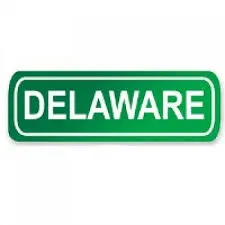It is often instructive to look back at old cases which have become so well known for a doctrine that the underlying facts are often forgotten. I did so recently in reading the original Caremark and Stone v. Ritterdecisions. The former decision was released in 1996 and the latter, some ten years later in 2006. They both made interesting reading and the underlying facts could well be drawn from the headlines of anti-corruption and anti-money laundering (AML) enforcement actions today. The original Caremark decision laid the foundation for the modern obligations of Boards of Directors in oversight of compliance in general and a company’s risk management profile in particular. Stone v. Ritter confirmed the ongoing vitality of the originalCaremark decision. Today, in Part 1, we review the underlying facts of the Caremark decision and in Part II, the legal reasoning.
Underlying Facts
In Caremark, the decision involved a company which provided patient care and managed care services and a substantial part of the revenues generated by the company was derived through third party payments, insurers, and Medicare and Medicaid reimbursement programs. Medicare and Medicaid payments were governed under the Anti-Referral Payments Law (“ARPL”) which prohibited health care providers (HCPs) from paying any form of remuneration (i.e., kickbacks) to physicians to induce them to refer Medicare or Medicaid patients to Caremark products or services.
To try and get around this prescription, Caremark entered various contracts for services (e.g., consultation agreements and research grants) with physicians at least some of whom prescribed or recommended services or products that Caremark provided to Medicare recipients and other patients. Moreover, Caremark had a decentralized governance and operational structure which allowed wide latitude to the business units to enter into such agreements without corporate or any centralized compliance or legal oversight. The results were about what you would expect.
Multiple federal investigations found that from the mid-1980s until the early 1990s, Caremark paid out millions to doctors in forms disguised to evade ARPL liability. Caremark claimed that its payments for consultation, teaching, research grants and other similar evasions did not violate the law. Further, it relied on an audit by Price Waterhouse (PwC) which concluded that there were no material weaknesses in Caremark’s control structure.
In 1993, Caremark formally changed its compliance manual to prohibit such payments, announced this change internally and put on training for this new set of policies. However, there were no attendant controls, monitoring or follow up noted. Indeed, it is not clear if much if anything changed at Caremark, given the decentralized nature of its business model.
Criminal and Civil Charges
In August 1994, Caremark was hit with a 47-page indictment alleging criminal violations of ARPL, specifically including making payments to induce physicians to refer patients to Caremark services and products. The indictment alleged that payments were “in the guise of research grants and others were consulting agreements.” Moreover, the Indictment went on to allege that such payments were made where no consulting services or research performed. (Very 2022 FCPA-ish) One doctor was alleged to have direct payments from Caremark for staff and offices expenses. Multiple shareholder suits were filed against the Board in Delaware and another federal Indictment was handled in Ohio. In addition to the claims in Ohio, new allegations of over billing and inappropriate referral payments made in Georgia and “reported that federal investigators were expanding their inquiry to look at Caremark’s referral practices in Michigan as well as allegations of fraudulent billing of insurers.” Rather amazingly, the company management, when reporting the Indictment to the Board of Directors, maintained the company had done nothing wrong.
Settlements
Of course, the Caremark senior management was not correct, and Caremark was required to pay millions to resolve enforcement actions. An agreement, with the Department of Justice (DOJ), Office of Inspector General (OIG), US Veterans Administration, US Federal Employee Health Benefits Program, federal Civilian Health and Medical Program of the Uniformed Services, and related state agencies in all fifty states and the District of Columbia required a Caremark subsidiary to enter a guilty plea to two counts of mail fraud, and required Caremark to pay $29 million in criminal fines, $129.9 million relating to civil claims concerning payment practices, $3.5 million for alleged violations of the Controlled Substances Act, and $2 million, in the form of a donation, to a grant program set up by the Ryan White Comprehensive AIDS Resources Emergency Act. Caremark also agreed to enter into a compliance agreement with the Department of Health and Human Services (HHS).
In addition to all these entities, Caremark was also sued by several private insurance company payors (“Private Payors”), who alleged that Caremark was liable for damages to them for allegedly improper business practices related to those at issue in the OIG investigation. As a result of negotiations with the Private Payors the Caremark Board of Directors approved a $98.5 million settlement agreement with the Private Payors in 1996.
In addition to the financial penalties, Caremark finally agreed to institute a full compliance program. It created the position of Chief Compliance Officer (CCO) and created a Board level Compliance and Ethics Committee who, with the assistance of outside counsel, was tasked with reviewing existing contracts and advanced approval of any new contract forms.
Join us for our next piece where we consider the court holdings and rationales in Caremark and Stone v. Ritter.




